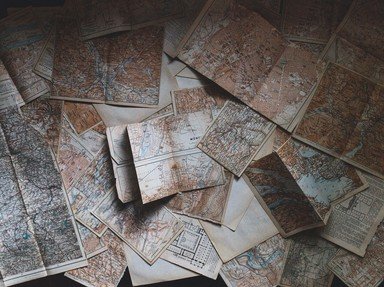Quiz Answer Key and Fun Facts
1. The French Revolution (1789-1799) shaped modern France and had a profound impact on modern Europe. The storming of the Bastille took place on 14th July 1789 but when was the reigning French monarch executed?
2. The Iranian Revolution of 1979 (or Islamic Revolution) overthrew Iran's monarchy. The Shah (Mohammad Reza Shah Pahlavi) was deposed and went into exile. What was his throne known as?
3. The People Power Revolution took place in the Philippines in 1986. Who became the new and 11th President?
4. 1917 was a tumultuous year in Russia with two major revolutions: the first, in February (March in the Gregorian Calendar), ended the rule of the Tsars and the second, in October, overthrew the provisional government formed only a few months earlier, brought the Bolsheviks to power, and paved the way for the establishment of the Soviet Union. Who was the head of the Bolshevik party at the time?
5. Whose assassination on February 14th, 2005, triggered the Cedar Revolution in Lebanon?
6. The Glorious Revolution in Britain in 1688 ended the reign of James II of England (James VII of Scotland). William of Orange took over as co-ruler together with his Queen and wife. Who was she ?
7. In Ethiopia the Derg communist junta overthrew Emperor Haile Selassie I in 1974-1975. Haile Selassie was revered as the head of the Rastafari Movement. Followers believe that he was the incarnation of Jesus Christ.
8. The Orange Revolution was a series of protests and political events that took place in Ukraine in 2004/2005. It was claimed there had been fraud in the presidential elections favouring the incumbent. Who were the Orange supporters backing?
9. The Industrial Revolution saw profound changes in society as efficiency of production rose dramatically. Some of the more important inventions of that period included the telegraph, the Watts's steam engine, the sewing machine and the spinning jenny. Chronologically, which was invented first?
10. The American Revolution in the late 18th century saw the balance of power shift significantly on a global scale. The armed conflict against the British, known as the American Revolutionary War or American War of Independence, lasted from 1775-1783. From 1778-1780, other major European powers allied with the Americans against the British. Who were the first?
Source: Author
nytoffee
This quiz was reviewed by FunTrivia editor
bloomsby before going online.
Any errors found in FunTrivia content are routinely corrected through our feedback system.
